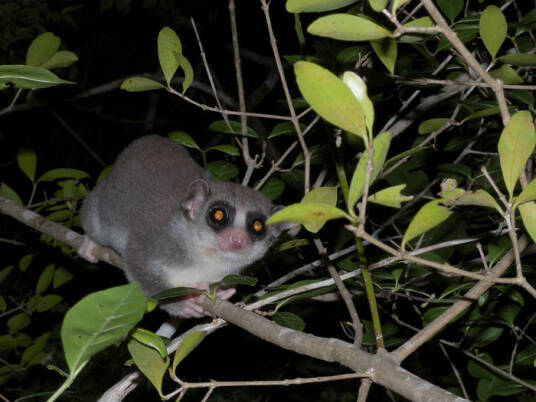Cheirogaleus minusculus
IUCN
LCBasic Information
Scientific classification
- name:Cheirogaleus minusculus
- Scientific Name:Cheirogaleus minusculus,Lesser gray mouse lemur
- Outline:Primates
- Family:Lemuridae
Vital signs
- length:16.7-26.4cm
- Weight:164-600g
- lifetime:No verification information
Feature
The second toe has a grooved and curved claw
Distribution and Habitat
It is only found in the north of Fianarantsoa in the east-central part of Madagascar. It lives in tropical rainforests or dry forests or shrubs, and some live in bamboo forests, reed areas or forestless mountains.
Appearance
The body length of the small iron-gray mouse lemur is 167-264 mm; the tail length is 195-310 mm; the weight is 164-600 grams. The tail is dense and long, in the shape of a club; the eyes are large; the coat is dense and brightly colored; the outer ear shell is semicircular; the hind limbs are longer than the front limbs, the fingers and toes have flat nails, and the second toe has a grooved and curved claw; there are 36 teeth, but the upper incisors are missing.
Details
The small iron-gray mouse lemur (scientific name: Cheirogaleus minusculus) is active during the day or at night, eating insects, fruits, reeds, leaves, and occasionally birds. It lives alone or in family groups. It hibernates. The gestation period is 120-150 days, and it gives birth from September to November, with one baby per litter. It reaches sexual maturity at 18 months.

Listed in the 2016 Red List of Threatened Species of the World Conservation Union (IUCN) ver 3.1 - Data Deficient (DD).
Protect wild animals and stop eating game.
Maintaining ecological balance is everyone's responsibility!








